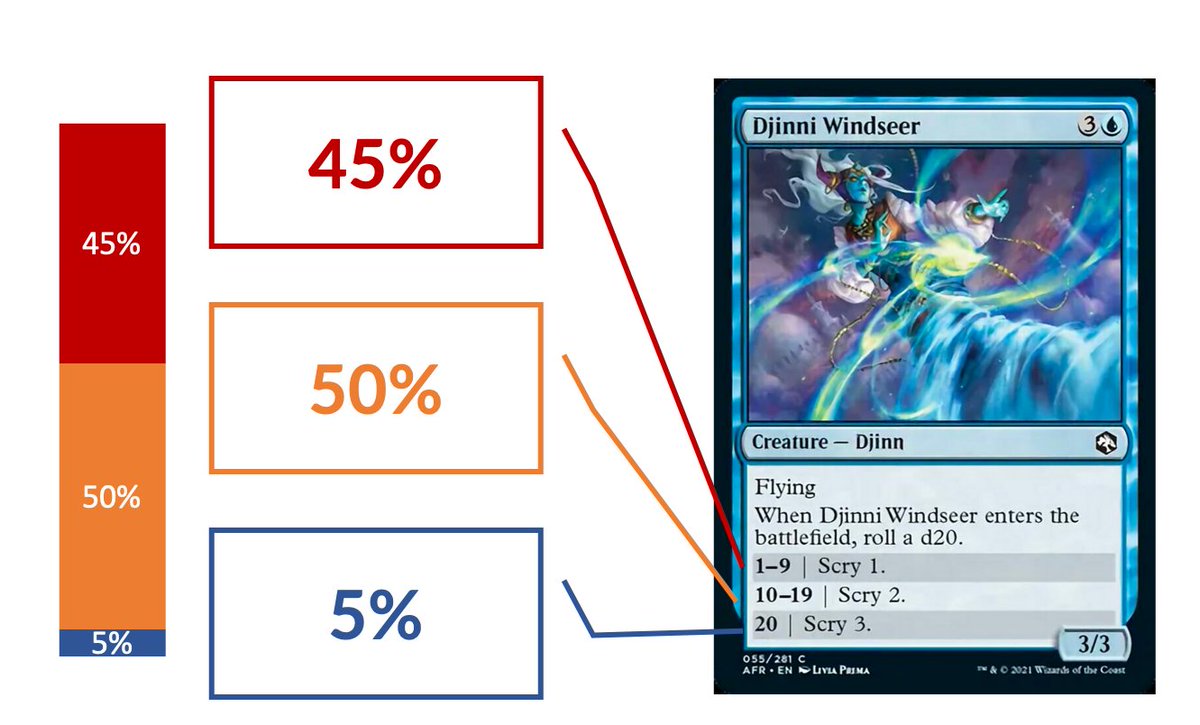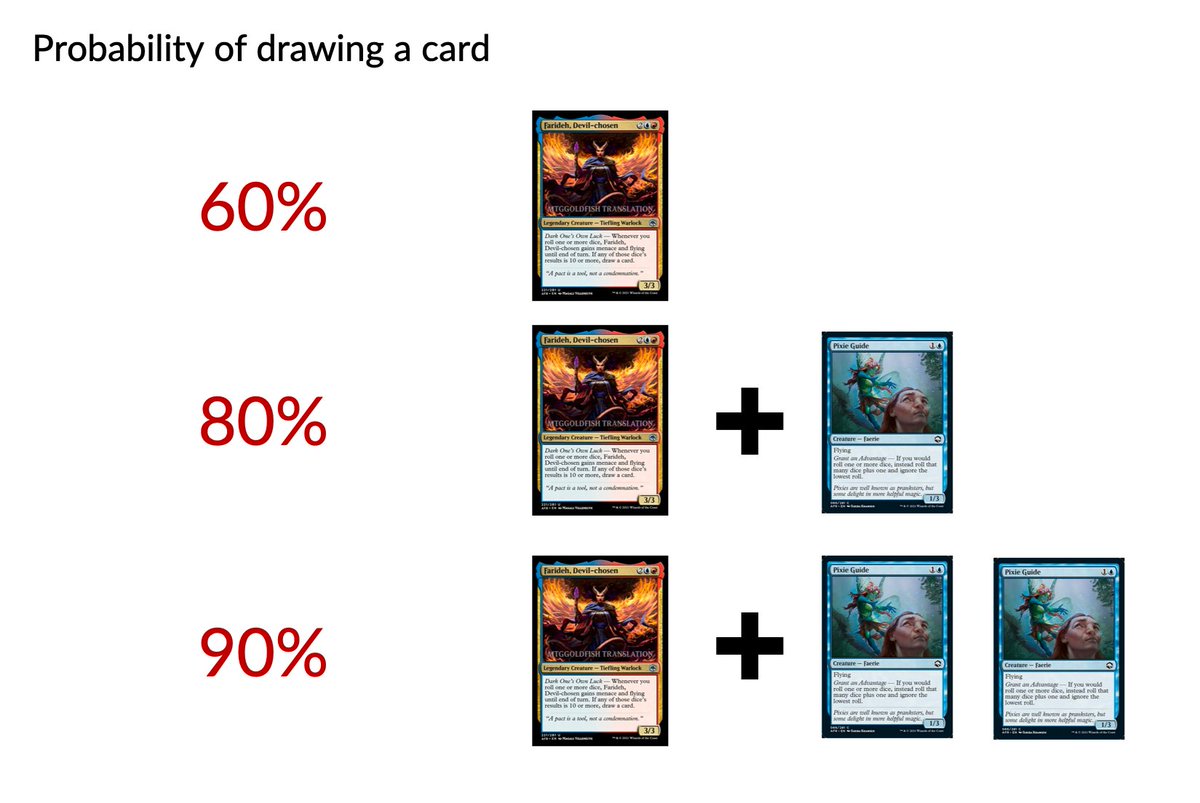New D&D expansion #MTGDND brings d20 rolls toMagic. Here is how to look at these random effects and my thoughts on some of the cards. Firstly, majority of the cards have 1-9 as baseline effect, 10-19 as bonus and 20 as a large success leading to these percentages: 1/x 

Good Magic players tend to maximise deterministic outcomes, and even with die rolls, it is to some extent possible. To get there, Pixie Guide lets you roll more dice and chose the highest outcome: 2/x 

How does it change outcomes? By quite a lot. Having a Pixie Guide more than halves the probability of lowest outcome, and nearly doubles the probability of rolling a 20, which usually comes with large bonus. The 10-19 outcome increases to 70% - which is much more reliable. 3/x 

Having two Guides means you are MORE likely to roll a 20 than rolling the 1-9. and your odds of rolling 10 or more reach 91%. At the level of 2 Guides you can sort of start treating the 10-19 effect or better as deterministic with a small fail rate. 4/x 

The uncertainty of die rolls can be offset by bonuses from die rolling payoffs. There are 4 spoiled so far. Some unconditional, some result oriented. Unconditional are pure value, especially Feywild Trickster looks great to me. Dwarf may be good if a 1/3 body is relevant. 5/x 

Farideh has a mix of unconditional effect (flying menace) and a conditional draw. Here are the odds of drawing a card based on the Pixie Guide count - with 2x Guide you draw 9/10 times.
(btw - thx to @MTGGoldfish
for those translated versions, very useful at this stage)
6/x
(btw - thx to @MTGGoldfish
for those translated versions, very useful at this stage)
6/x

@MTGGoldfish Critical Hit on the other hand, gets back to your hand from the graveyard whenever you roll a 20. It is not a realistically reproducible effect with no support, but a bonus happening once very 20 roll spells you play, but with some guides you can make the bonus every 7 spells 7/x 

@MTGGoldfish Maybe I should have mentioned earlier: I am not a fan of random effects in magic. Games should not be determined on a coin flip if I can avoid it. But I think the design team managed to navigate the cards really well. The low rolls still fulfil the cards main role. 8/x
@MTGGoldfish You still get 1 life rolling 1 with Sylvan Shepherd, triggering life gain synergies, Lightfoot Rogue is still a deathtouch creature, etc. So I will start by treating the low roll result as a baseline and everything above it as a bonus, I am not expecting, but happy to get 9/x
@MTGGoldfish There are few cards I do have doubts: Scion of Stygia being one, and Power of Persuasion the other. Tapping a creature is very different from tapping and not making it untap. And I have a suspicion sometimes rolling 20 with Power of Persuasion is worse than rolling 19 10/x 

The mechanic seems balanced, not prone to some big swings based on one roll and very on theme for the set. I hope the support is sufficient to make it draftable, but with a 3/3 Flying Menace Edgewall Innkeeper that seems likely.
Note - in tweet 6 60% should be 55%.
11/11
Note - in tweet 6 60% should be 55%.
11/11
• • •
Missing some Tweet in this thread? You can try to
force a refresh
















